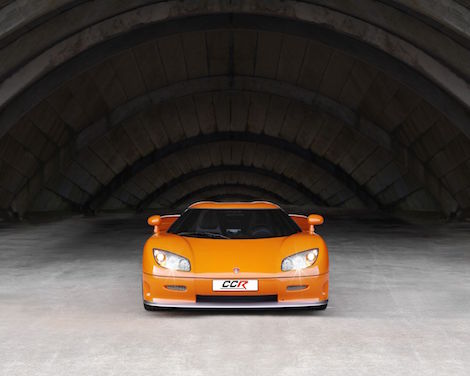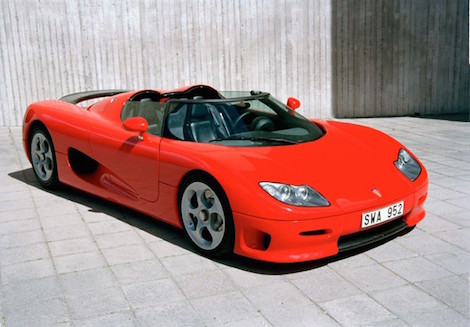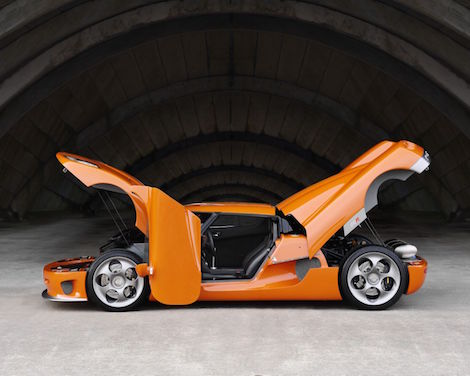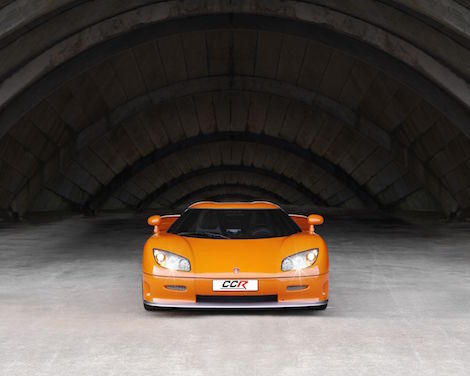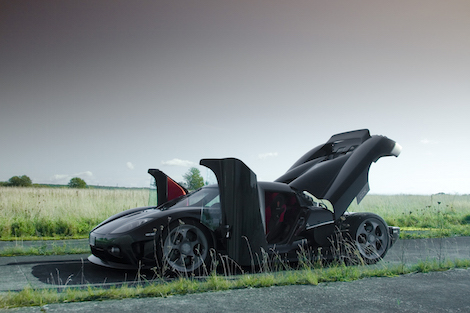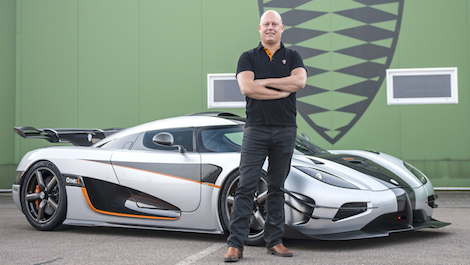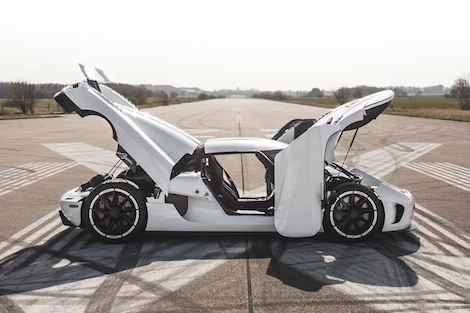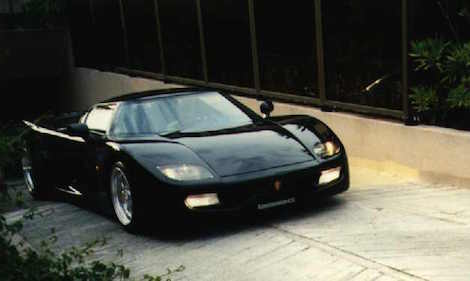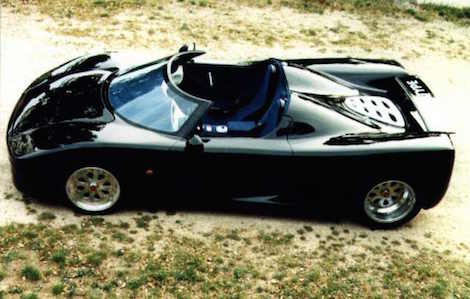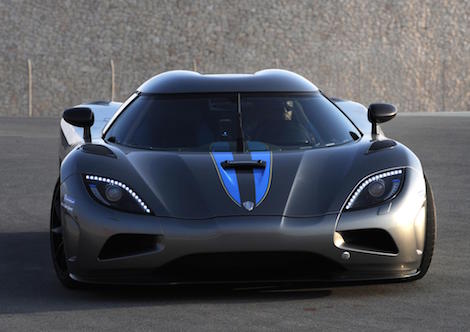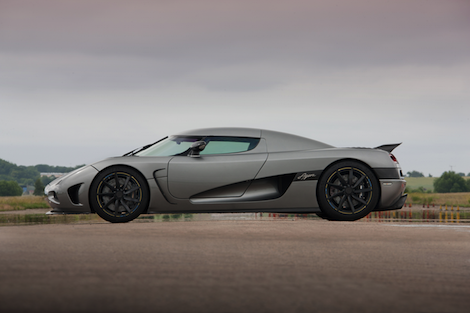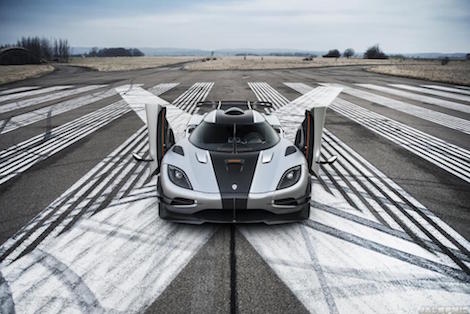On 28 February 2005 at about 12:10pm, supercar engineer and test driver Loris Bicocchi lifted his foot from the carpet, releasing pressure on the 806hp twin-supercharged V8 engine located just behind him, having just set a new World Record for Production Cars.
The 242mph (388km/h) top speed achieved at the Nardo Supertipo proving ground was enough to wrestle the title away from the McLaren F1, a title the British supercar had held doggedly since 1993.
The car Biocchi was driving was not the Bugatti Veyron (the no expense spared hypercar from one of the biggest car manufacturers in the world); it was a Koenigsegg CCR, only the second production model from the Swedish car maker since its inception in 1996.
The speed with which Koenigsegg went from 1996's CC concept to 2005's CCR record breaker can largely be attributed to company founder Christian Von Koenigsegg. A driven man, Christian first got the idea of building a supercar after watching a Norwegian animated film called The Pinchcliffe Grand Prix - at the age of five. At the age of five I had plans to be Superman or Luke Skywalker, but unlike me Christian was a man who realised his dreams. He did have to wait some 17 years however, moving away from his lucrative export business and setting up Koenigsegg Automotive AB by the age of 22.
It was then that Von Koenigsegg set about creating the perfect sports car. The initial design of the car that would become the CC prototype was done by Von Koenigsegg himself with industrial designer David Crafoord brought in to create a 1:5 scale model and eventually the clay plug that would be used to make the prototype. Loris Bicocchi, the man who would later drive the CCR during its record breaking run, brought his experience from working with the likes of Ferrari and Lamborghini in helping to develop the suspension and the car was tested at the Volvo wind tunnel and on track by Touring Car legend Rickard Rydell.
The completed prototype was unveiled to the world at the Cannes Film Festival in 1997, only three years after the company was founded, and 18 months after work on the CC began. The reception that the CC got at Cannes gave Von Koenigsegg the impetus required to move from prototype to preproduction and when the world next saw the Swedish supercar it had most of the features that would become synonymous with Koenigsegg - a carbon/Kevlar body over a carbon fibre monocoque, the patented Triplex suspension system and the Dihedral Synchro-Helix doors (look them up, I'm not even going to start explaining).
The first production car was unveiled two years later at the Geneva Motor Show where the keys were handed to its new owner. Now dubbed the CC8S, only six versions of this car exist and only two of them in right-hand-drive configuration, making the CC8S the rarest model from a company that thrives on scarcity. A few years later when Koenigsegg was in negotiations to purchase Saab from General Motors (with a little help from the Swedish government) it was suggested that Saab manufactured the same number of cars per hour as Koenigsegg builds in a year - and when you consider the labour intensive nature of the hand built supercars it is easy to believe.
By way of comparison, the record breaking CCR that followed was positively common with 14 units produced, even more if (like some) you consider the CCR and the car that followed it, the CCX, one and the same. That is due to the CCX being little more than a substantial upgrade of the CCR, designed primarily to allow Koenigsegg to sell cars in the lucrative US market. The primary differences between the two cars relate to passing specific US crash regulations, such as a slightly increased length, modified front bumper with American specification lights and the swapping out of the previously used Ford 'crate' motor for a bespoke 4.7-litre twin-supercharged V8 engine.
That engine would see use in six different iterations of the CCX/R, but when it came time to replace that model a new engine was required. Having used superchargers since the founding of the company the move to twin-turbochargers came as something of a surprise, but then, when your car goes on to set six land speed records including 0-300km/h and 0-300-0km/h (that still stand at the time of writing) nothing is left to chance. The twin-turbochargers were connected to a Koenigsegg built 5.0-litre V8 and the car was called the Agera.
The reason the Agera is so (in)famous is due to the hundreds of videos showing it decimate everything from the Lamborghini Aventador to the Bugatti Veyron in drag races. In fairness the car in question is usually the range-topping Agera R, but even so... Tipping the scales at 1,435kg the Agera R packs a 1,140hp punch when running on E85 biofuel. It is stupendously fast so we can only imagine what the lighter, more powerful One:1 is like. The One:1 is so named as it has one hp for every one of its 1,360kg. It is, according to Von Koenigsegg, a mega-car rather than a hypercar.
A new type of carbon fibre, 20 per cent lighter than Koenigsegg had previously used, makes up the bulk of the One:1's form while new 3D printing technology was used for parts such as the turbo housing and exhaust pipes. Koenigsegg is no longer a small time car producer from Sweden; its technological advancements are showing others how it is done with the likes of the single-speed Koenigsegg Direct Drive System in the hybrid Regera and the 'Free Valve' system that could spell the end of the camshaft.
And all because some kid decided he wanted to build a supercar at the age of five. Anyone else feeling like they wasted their youth?

